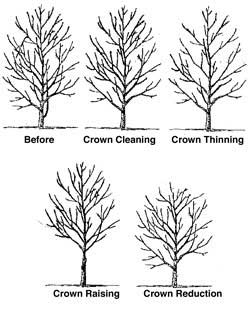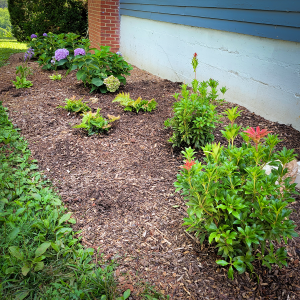Winter is the ideal time to prune trees and shrubs. The type of pruning depends on what each tree needs. Here are the basic types of pruning that we perform.

CLEANING is the removal of dead, dying, diseased, crowded, weakly attached, and low-vigor branches from the crown of a tree.
THINNING is the selective removal of branches to increase light penetration and air movement through the crown. Thinning opens the foliage of a tree, reduces weight on heavy limbs, and helps retain the tree’s natural shape.
RAISING removes the lower branches from a tree in order to provide clearance for buildings, vehicles, pedestrians, and vistas.
REDUCTION reduces the size of a tree, often for clearance for utility lines. Reducing the height or spread of a tree is best accomplished by pruning back the leaders and branch terminals to lateral branches that are large enough to assume the terminal roles (at least one-third the diameter of the cut stem). Compared to topping, reduction helps maintain the form and structural integrity of the tree. Advantages of thinning include better air circulation, improved sunlight penetration, and less wind resistance.


